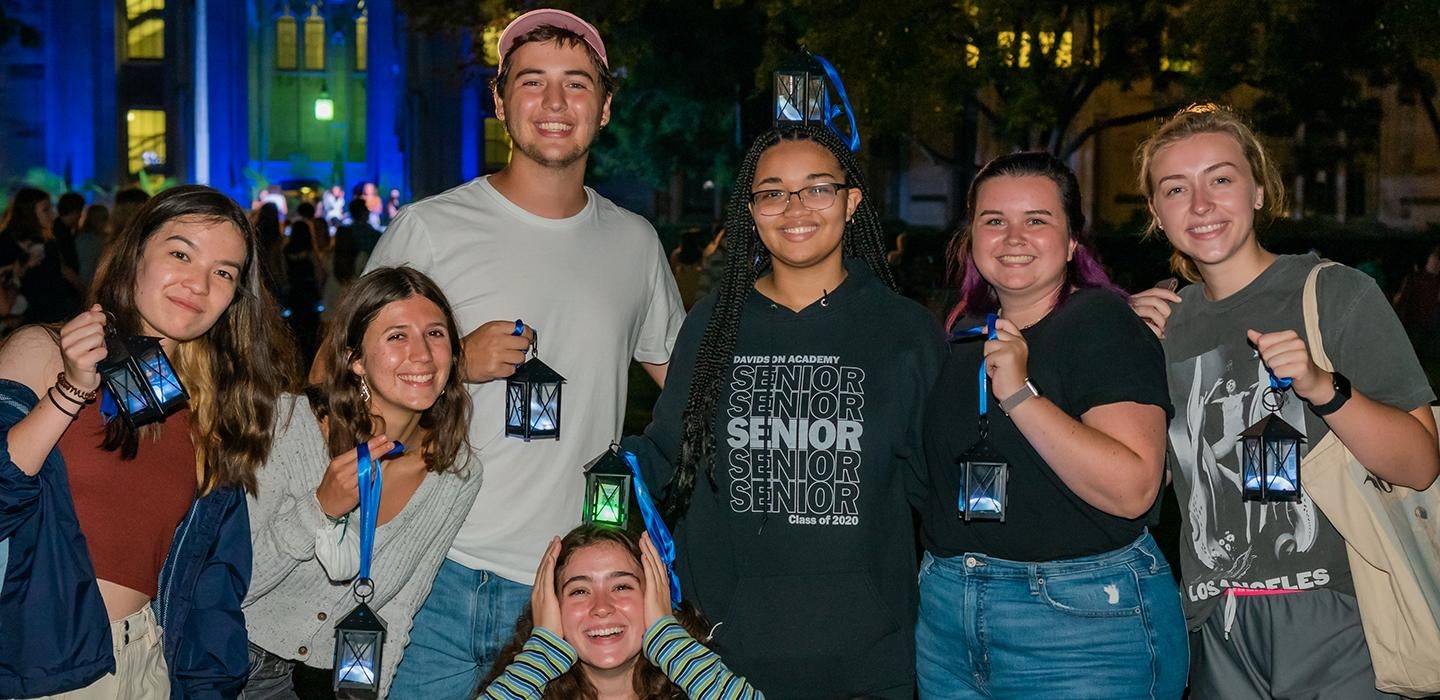
Subscribe to Pittwire Today
Get the most interesting and important stories from the University of Pittsburgh.This story has been updated
Heinz Memorial Chapel is aglow as first-year students line up along the pews in awe, smiling as their predecessors — University of Pittsburgh alumni from across the ages — hold candles aloft in small lanterns. The light enclosed in each metal frame represents a most precious Pitt tradition, the passing of the “light of learning” to the next generation of Pitt students.
On Aug. 27, the University will celebrate the 103rd Lantern Night, a collaboration between the Pitt Alumni Association (PAA) and the Alumnae Council. Check-in begins at 7:15 p.m., and the outdoor event starts at 8 p.m. The event will also be livestreamed for those unable to attend in person.
Some 1,300 people annually participate in Pitt’s oldest tradition, which began in 1920 and symbolizes the passing of knowledge and ambition to succeed as students begin their collegiate journey.
To celebrate the Pitt rite of passage for all first-year and transfer students, we answered all your burning questions about Lantern Night.
How did Lantern Night begin?
Sisters Margaret and Stella Stein are credited with inspiring the University’s first Dean of Women Thyrsa Wealhtheow Amos to launch Lantern Night shortly after the passage of the 19th Amendment to the U.S. Constitution, which granted women the right to vote.
In 1895 the Steins were the first women admitted to the University as full-time students. They graduated with bachelor’s degrees in 1898, tying for first in their class, and later claimed the distinction of also being the first women to earn master’s degrees from Pitt.
Who is invited to participate?
Historically, Lantern Night was a tradition for women, with alumnae flame bearers passing on their light to the new class. 2020 marked a new era: As part of Pitt’s efforts to expand diversity and inclusion throughout the University, the event was opened to all first-year and transfer students, regardless of gender.
How have the lanterns changed over time?
The lantern design has also undergone a few iterations. The first was a Japanese paper lantern but switched to metal in 1941. The lanterns of today are significantly smaller and plastic. Design selection each year is based on availability.
In 2020, PAA went flameless to expedite the ceremony, in part because the number of incoming transfer students had substantially increased. LED lights have been used ever since.
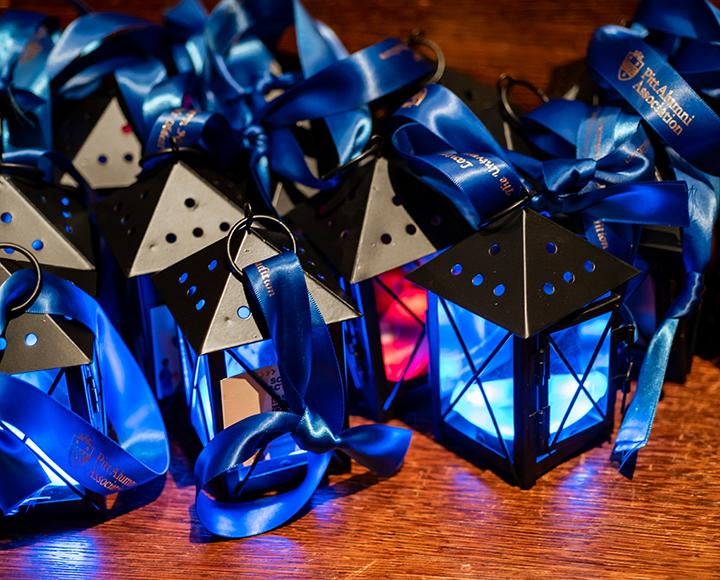
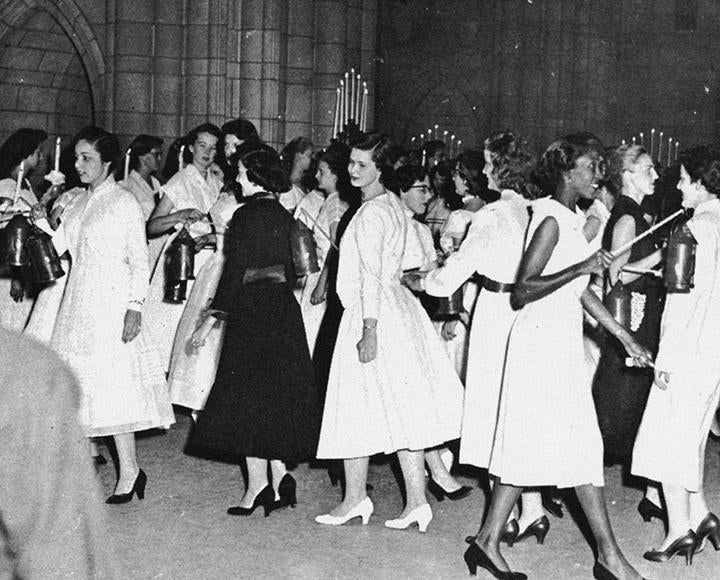
Has the ceremony always been held in Heinz Chapel?
No, because Heinz Chapel didn’t open until 1938. Some ceremonies were held in the Cathedral of Learning. Before the COVID-19 pandemic, flame bearers and students would usually light their lanterns in the chapel and proceed to the lawn. In 2020, pandemic restrictions interrupted the festivities, so LED candles were displayed in residence hall windows instead. In 2021, the ceremony was hosted on the Cathedral Lawn instead of Heinz Chapel to follow COVID-19 protocols. This year’s celebration will also be outdoors.
What do alums do with their lanterns?
Many hold onto their keepsakes and keep them close: on desks, shelves, mantels. And we know of one passionate Panther who took things to another level. Erin Anticole (SOC WK ’96, ’97G) missed out on Lantern Night as a first-year student but recreated the tradition with her daughter the night before she began kindergarten — and, in 2021, she experienced the real thing with her son, Isaac D. Anticole, a current student in the Kenneth P. Dietrich School of Arts and Sciences.
If you’ve done something interesting with your lantern, pittmag [at] pitt.edu (subject: Lantern%20Night%20story) (Pitt Magazine would love to hear about it).
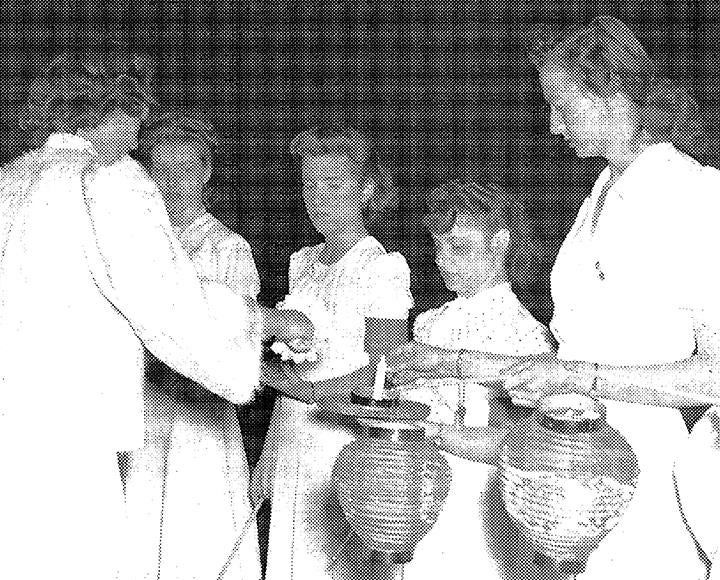
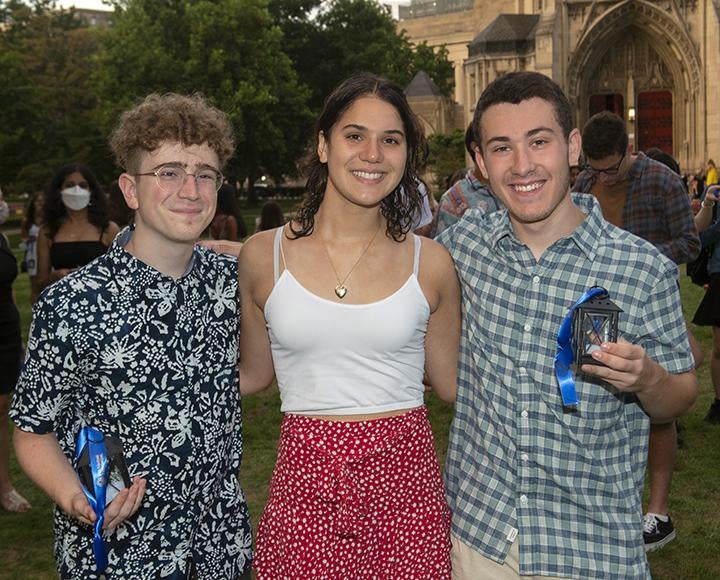
Where can I share my videos and photos from Lantern Night?
Show your glow and you might be featured on Pitt's social media channels. Use #H2P throughout Welcome Week and tag @pittofficial on Instagram. You can also send us your photos directly through our Share With Pitt portal or on TikTok, Facebook and Twitter.
What else does Lantern Night symbolize?
Lisa Golden (A&S ’93), past president of the PAA board of directors and an emergency room physician at UPMC Altoona, explains: “This begins when we share the light of learning on Lantern Night and continues throughout not only our academic career at Pitt but also our lives as Pitt alumni. While Lantern Night represents the end of Welcome Week, it simultaneously signals the beginning of a longer journey where we learn to think critically about the world around us, to debate respectfully and to be good stewards of words and ideas.”
Can’t get enough about the tradition? View Lantern Night messages and memories from the centennial celebration.
— Kara Henderson, top photograph by Emily O’Donnell


